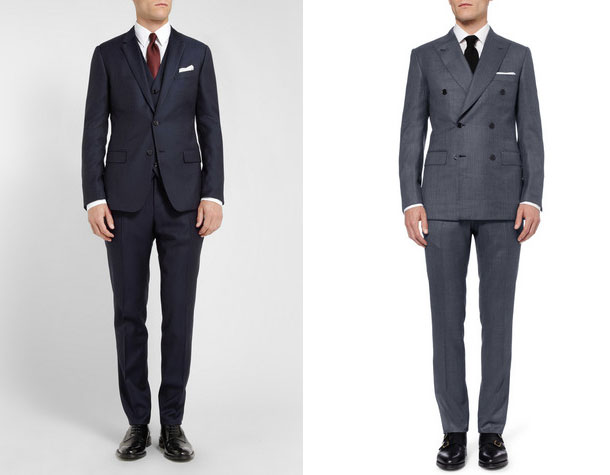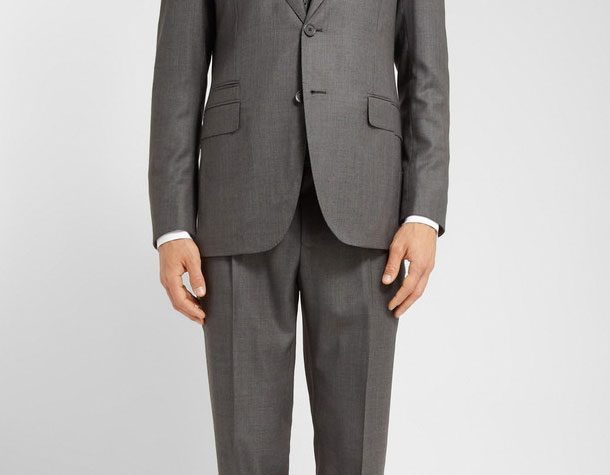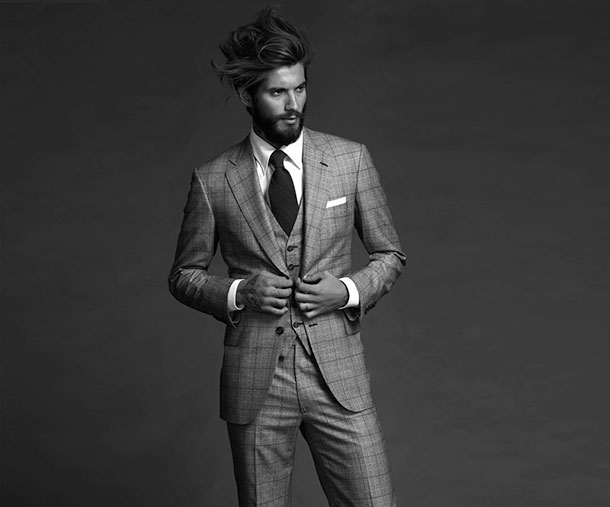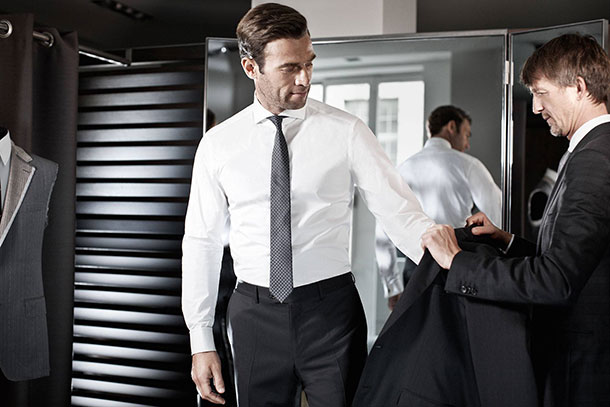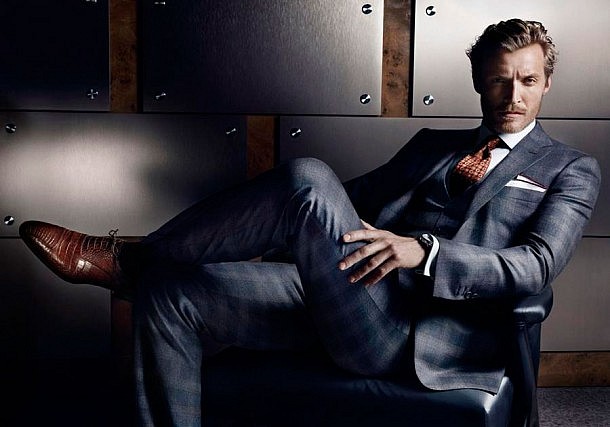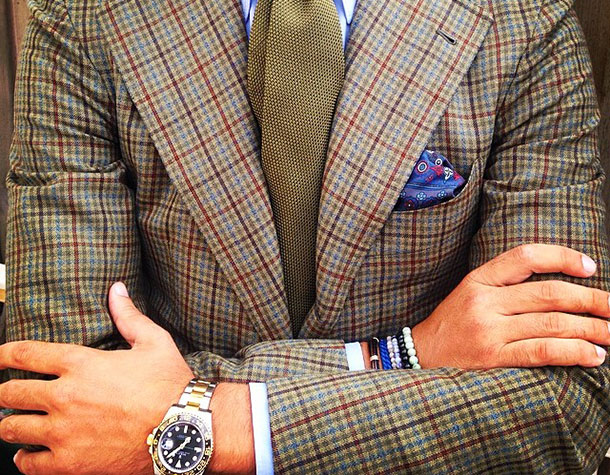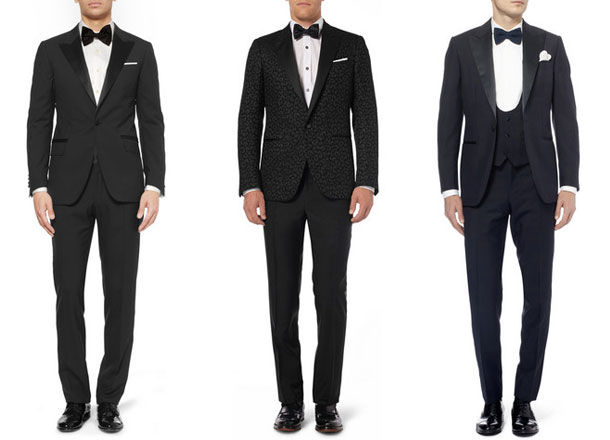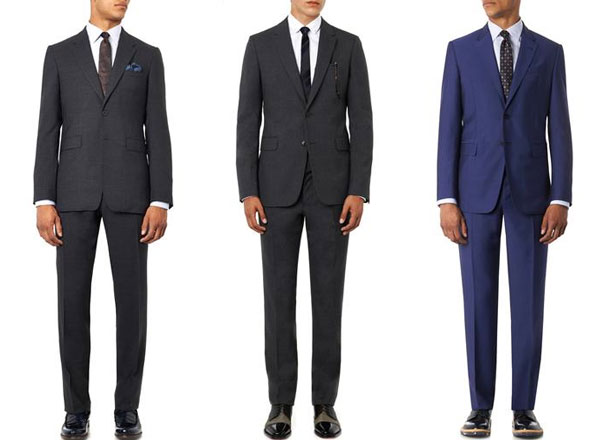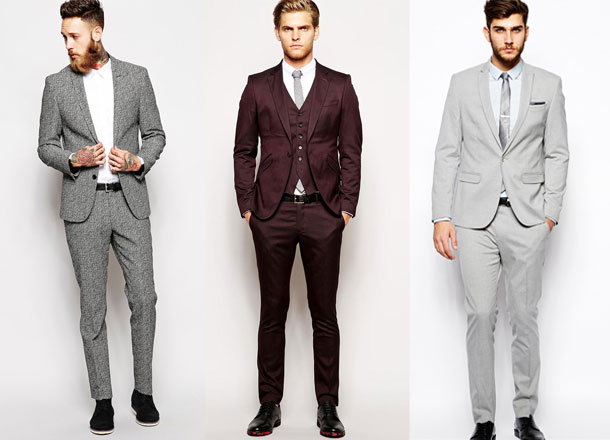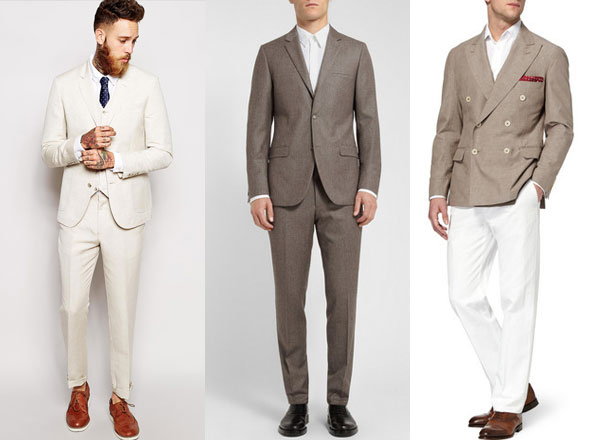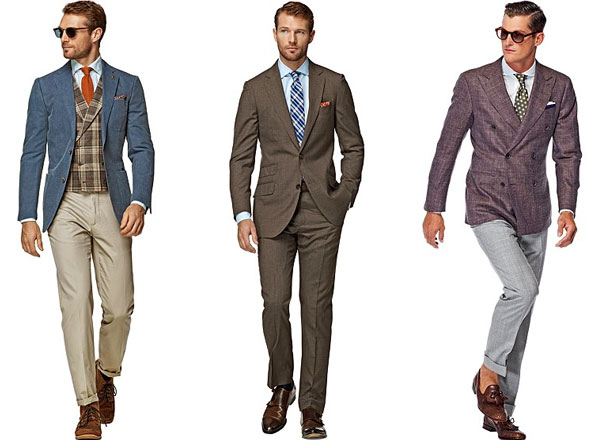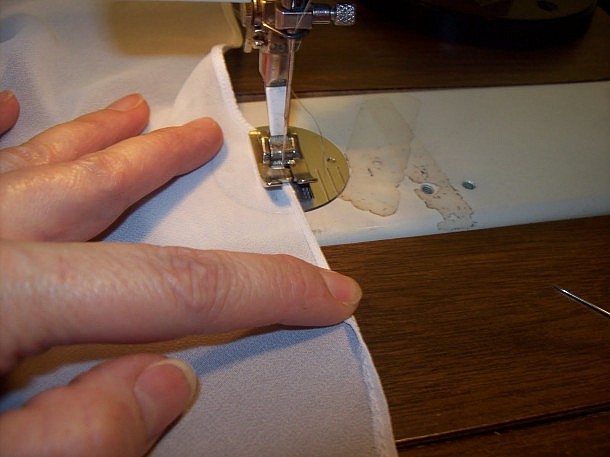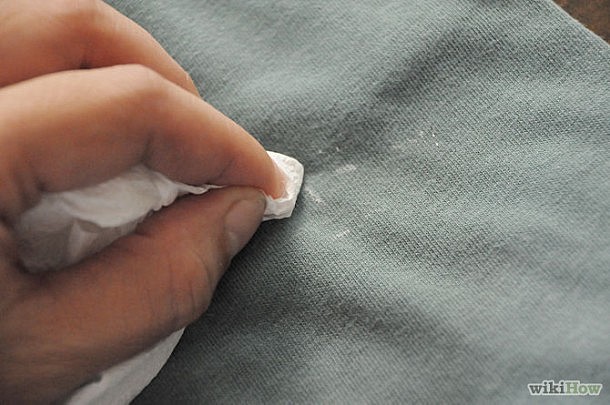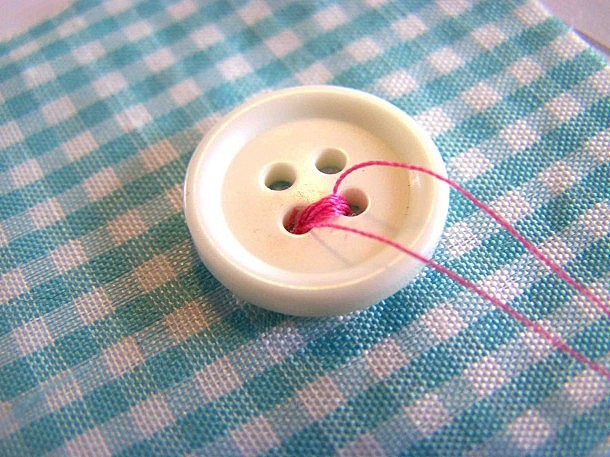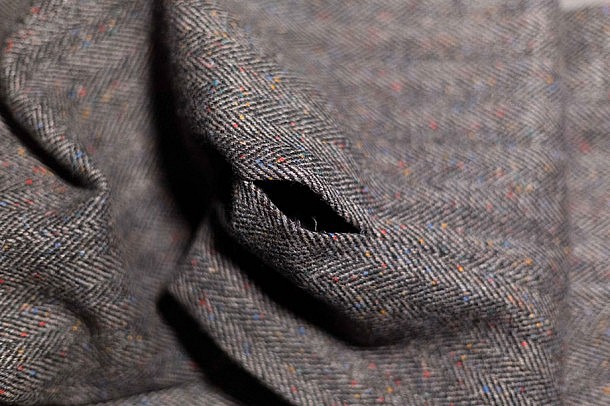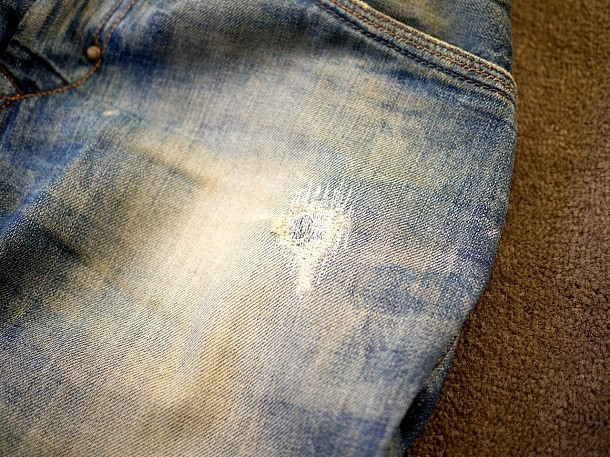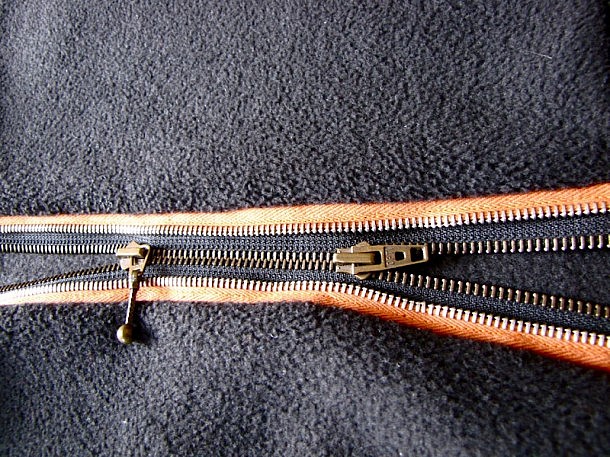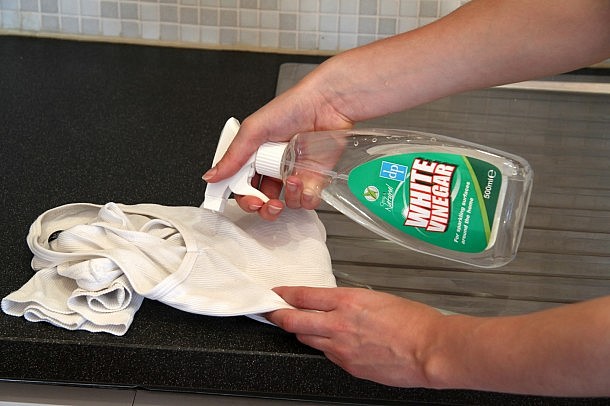Se van acabando los días de frío, así que estos looks invernales irán dando paso a combinaciones más coloridas y ligeras. Para ir acabando con el invierno, esta propuesta de traje gris a cuadros en tres piezas, con camisa blanca, corbata de seda azul marino y abrigo largo también en azul marino. Es una combinación sencilla, seria y formal, perfecta para acabar la estación en la oficina y dar paso a otros tonos y tejidos más primaverales. A decir verdad, cada vez es menos habitual ver trajes de tres piezas, pero sigo pensando que el toque que aporta el chaleco no debería perderse. ¿Qué opináis vosotros?
sábado, 31 de enero de 2015
viernes, 30 de enero de 2015
HOW TO MAKE A GOOD SUIT GREAT
If you’re going to go to the trouble of wearing a suit, you don’t want it to look average. You don’t want it to look acceptable. You don’t even want it to look good. You want it to look great, and you shouldn’t settle for anything less. One way to do that is to drop thousands of dollars having someone design a suit just for you, but it isn’t a practical option for most guys. Instead, there are plenty of tricks, tools and rules that can turn an ordinary suit into an extraordinary one.
A Well Fitting Jacket
Are you sick of hearing us say that fit is everything? Then sorry, today is not your day. Fit is everything. It’s the most basic building block of a great suit. If you don’t get it right from the very beginning, even the most expensive suit will look like something your blind aunt picked out for you when you were twelve. The right jacket should give you a full range of motion, both buttoned and unbuttoned, and should suit your body type. If you’re shorter or stockier, stick to single-breasted. If you’re tall and lean, experiment with double-breasted. If you’re carrying little extra around your middle, a jacket with a lower button will elongate your silhouette.
Correct Trouser Length
Tailoring your trousers is a must. Up top, they should sit near your waist – not your hips. You should be able to fit a finger – but not more – into the waistband comfortably. Down below, your ankles should be completely covered (even if you have spectacular taste in socks) and the hems should just brush the top of the heel. This ensures the trousers drape properly and maintain their shape. Traditional tailoring dictates one break at the front of trousers and a straight line down the back. There should be no excess fabric pooling around your ankles. If you want a more modern look, you can opt for shorter trousers that have a half-break or no break at all, and show off your shoes and a sliver of sock.
Sleeve Length To Cuff Length Ratio
Like a woman’s little black dress, your jacket sleeves should reveal something but not too much. Aim for showing off about 1.5 cm or a half inch of shirt cuff. On the shirt side of things, your cuffs should not slide up when you stretch your arms. A good tailor will measure both arms separately because almost no one is symmetrical. If you’re wearing a button-cuff shirt, your sleeves should touch your wrists. If you’re rocking a French-cuff shirt, the cuffs should break a little further down. And never, ever forget to remove the label on the left sleeve of your jacket before wearing a new suit.
Jacket And Shirt Button Etiquette
Like a lot of etiquette lessons, jacket and shirt button protocol should be simple to follow, yet tons of guys still get it wrong.
- Rule #1: Always unfasten your jacket buttons when you sit. No exceptions.
- Rule #2: Always keep your cuff buttons fastened. Also no exceptions.
- Rule #3: Button all the buttons on your dress shirt. Still no exceptions. (Unless you’re wearing no tie of course)
- Rule #4: For two-button jackets, button the top button only. For three-button jackets, leave the bottom undone, fasten the middle, and choose whichever option you prefer for the top.
- Rule #5: If you’re going the double-breasted route, keep the top and inside buttons fastened at all times, but always leave the bottom undone.
Great Shirt Collar & Well Tied Tie
Getting it right in the neck region requires a few elements to work together. First, as always, is the fit. You should be able to fit a single finger between your neck and the collar of your shirt, but no more than that. A small amount of shirt collar should be visible above the jacket. Shape and size are also important. Your collar should complement your face as well as the kind of knot you tie in your neckwear. Your tie knot should fill the space completely, so wider knots are better suited to spread or cutaway collars. To maintain formality, your tie knot should be balanced – asymmetrical knots are more casual that symmetrical knots. If you’re going without a tie entirely, keep the collar on the smaller side.
Well Polished Shoes And Matching Belt
The matching shoes and belt are a tried-and-true style rule. A black belt is almost always a safe bet, but brown will be more appropriate with khaki suits and certain shades of grey. The buckles should match any other accessories you’re wearing, e.g. a watch. Footwear can present a bit of a conundrum. With all the options now available for men, your shoe collection could easily rival your girlfriend’s. How do you choose? Learn your way around the different kinds of men’s shoes. Oxfords, monk straps, brogues, derbies, loafers, Chelsea boots…all are possibilities, provided they fit the suit and the formality of the occasion.
Add Detail With Accessories
Accessories are one of the easiest ways to turn an average outfit into something extraordinary, but consider them carefully. Your possible options include pocket squares, cufflinks, tie bars and lapel pins, but if you try to wear them all at once, you’ll end up looking like the sartorial version of a hoarder. Err on the side of restraint. The same goes for timepieces. If you’re wearing a watch with your suit, make sure it’s something elegant and sophisticated, not the bulky, shock-resistant number you wear to the gym.
jueves, 29 de enero de 2015
REGLAS DE ESTILO: COMO IMPACTAR CON UN ESMOQUIN
Es seguro decir que un hombre nunca puede ir más elegante que cuando él está llevando un esmoquin. El esmoquin es elegancia. Es halagador. Es atemporal. Es la quintaesencia, masculina clásica. Si no es el traje que ha llevado en toda su maldita vida, es que está haciendo algo mal.
No hay límite hacia mi respeto por clásico traje de etiqueta, pero a veces se está de humor para algo más imaginativo. Los puristas, mirar hacia otro lado. Esto no es para ustedes. Dandis, rebeldes y otros tomadores de riesgos sartoriales, tenemos buenas noticias: el negro no es su única opción cuando se trata de ir de etiqueta. Hay un montón de preguntas que deben hacerse cuando se trata de color, tela y de la manera de ser utilizado.
Tal vez la forma más fácil de mezclar las cosas es jugar con los materiales. Tradicionalmente, un esmoquin está hecha de pura lana. Satén o raso, paramentos que se encuentran en las solapas y botones de la chaqueta, y una raya a juego que recorre el largo del lateral de los pantalones. Es una estilismo que le servirá para cualquier evento, pero no va a ser la opción seria que estamos buscando hoy.
Para ello, tendrá que aventurarse en texturas y patrones más valientes. La forma más fácil de esas opciones más aventureros es de terciopelo, un favorito táctil que nunca estuvo fuera de moda durante mucho tiempo. Un blazer de terciopelo puede ser el toque dandi extravagante, al más puro estilo rock 'n roll, dependiendo de cómo se apoye en los accesorios.
Si terciopelo es demasiado sutil para su gusto, pruebe los cuadros o una chaqueta de jacquard. Usted está garantizado el éxito gracias a destacar, a menos que el mantel de la mesa donde cene tenga el mismo patrón.
Cuando hablamos de hacer una declaración, nos referimos a un tipo muy específico: la clase. Así que, aunque no lo recomendaría un esmoquin de neón que parece que fue diseñado para una rave extrañamente formal, estamos definitivamente a favor de ampliar sus horizontes más allá del negro básico.
Si no se siente en absoluto nervioso acerca de tomar una zambullida en las aguas más coloridas, se debe empezar de forma sencilla. Optar por un esmoquin azul noche, que en realidad se ve mejor y tiene más profundidad bajo más iluminación que la alternativa negro. Una vez que eres lo suficientemente valiente como para ir más allá de azul. Un gran número de las mejores marcas y de famosos han adoptado el azul media noche como un giro en la tendencia de los últimos tiempos.
Para aquellos que están verdaderamente dispuestos a ampliar sus horizontes de color, hay opciones más atrevidas. Tire a la precaución al viento y aprovechar esa vieja magia de Hollywood y vincular una chaqueta blanca con pantalón negro.
El mundo de la moda masculina el esmoquin es la ostra. No hay ninguna regla que diga que la pajarita tiene que ser negro, excepto cuando se le exija, en cuyo caso cumpla como el caballero que es. En otros casos, condimentar el estilo en la forma que estime conveniente. Como siempre que se mantenga el fit ajustado, los detalles clásicos y los accesorios mínimos, usted puede conseguir presentarse con casi cualquier cosa. Pruebe una camisa de vestir de cambray, una chaqueta cruzada, un patrón de cuadros, o solapas de pico anchas. Como siempre, la clave es la confianza. Si está claro que si a usted le gusta cómo le queda, a otras personas también les encantará.
¿Por qué no separar su ropa formal en sus piezas componentes? O incluso optar por una chaqueta de cena totalmente diferente? Si nos atenemos a los pantalones clásicos negros en la parte inferior, y una simple camisa blanca en la parte superior, la chaqueta tiene rienda suelta para acaparar los flashes. Y acaparar que su chaqueta sin duda lo hará, si se toma el ejemplo de los más audazmente vestidos y jugar con el color, el patrón y la textura. Si el código de vestimenta se inclina más hacia el final elegante e informal del espectro, incluso se puede considerar el acoplamiento de una chaqueta formal con denim oscuro para un alto-bajo combo llamativo.
Antes de ir pensando que buscar la locura en chaquetas que buscan nuestra locura interna son sus únicas armas para elevar la modernidad de un esmoquin, debemos hablar acerca de sus piernas. Más específicamente, lo que les está poniendo en. Sus pantalones no tienen que ser de color negro. Ellos ni siquiera tienen que ser pantalones... kilts. Demasiado a menudo descuidamos nuestras mitades inferiores a favor de nuestras americanas, pero no más a los pantalones de ser los de abajo del mundo esmoquin.
Es más difícil jugar con telas aquí, como opciones más aventureros pueden arruinar fácilmente la sensación de corte limpio de su ropa formal, pero los patrones están maduros para la experimentación.
Desde Lander Urquijo nos ofrecen su opinión sobre la prenda más elegante del vestuario.
En nuestro caso el desarrollo del esmoquin va aparejado a la propia evolución natural del hombre actual. Con la elección correcta de los tejidos de un esmoquin podemos enfatizar los diferentes aspectos de la prenda. Por esta razón en ocasiones hemos descontextualizado distintos tejidos como el camuflaje para usarlos en una chaqueta de esmoquin. En otras ocasiones como esta temporada hemos diseñado el esmoquin enteramente en un tejido de cuadros.
Por otra parte, hemos evolucionado algunos elementos del esmoquin como el clásico fajín hasta convertirse en una parte mas del pantalón, cambiando las proporciones de la cinturilla y otorgando a la parte inferior del esmoquin unas dimensiones mas favorecedoras y elegantes acordes a todo el conjunto. Además, el "juego" entre los diferentes tejidos que se produce en las solapas de la chaqueta se reproduce en el pantalón, extendiendo ese diálogo de tejidos al galón o incluso a ese nuevo fajín.
En definitiva, conservando prácticamente las dimensiones clásicas del esmoquin, intentamos adaptarlo a un hombre que esta en constante evolución, exprimiendo el carácter tanto lúdico como elegante que el conjunto debe tener.
martes, 13 de enero de 2015
A MEN’S GUIDE TO DRESSING FOR A WEDDING
The dreaded wedding invitation. It sits on your desk, collecting dust and moisture from the beads of sweat that drip down your face whenever you contemplate what to wear to the irksome event. It’s stressful enough thinking of the endless traditions that must be observed, the tedious toasts, the strange family members you’re doomed to meet, the dances you’ll have to endure… then throw in choosing an appropriate outfit, and it’s a wonder anyone makes it to the wedding without experiencing a psychotic break first.
We can’t do much about the toasts and eccentric relatives, but we can make sure you’re properly suited and booted for the occasion. Below is a basic guide to all kinds of men’s wedding attire – follow these rules, and you’ll be looking so good the bride will be second-guessing her choices.
Black Tie/Formal
The tuxedo is the cornerstone of men’s wedding dress. Though customs and conventions have evolved over time, black tie remains the standard for formal attire so it’s essential to get it right. Weddings at their most formal may request white tie or full evening dress, but that’s an increasingly rare demand. These days, a formal wedding is most likely to require black tie – aka a basic tuxedo.
- Suits: A tuxedo consists of a black (or dark navy) wool dinner jacket with matching trousers. The jacket will have satin or grosgrain facings on its lapels and buttons, while the trousers will have a stripe or braid in matching material running along the outseam. The jacket should have a peak lapel or shawl collar, and no vents. The trousers should have flat fronts and no belt loops.
- Shirts: As a general rule, turn down collars are more appropriate for black tie, while wing collars are better suited to white tie. The buttons may either be concealed (a fly front) or on show (a French placket). The shirt front can be plain if you favour a cleaner look, pleated if you want something more fanciful, or made from a subtly textured Marcella fabric.
- Shoes: The most traditional form of black tie footwear is pumps with a satin or silk bow on top, but they’re a rare sight these days. Opt instead for simple black leather lace-ups (patent, if you want to make more of a statement) with no broguing. Simplicity is key here – the fewer the details, the more formal the shoes.
- Accessories: Begin with the bowtie – it’s a must, and yes, you should be able to tie it yourself. The clip-on was cute when you were eleven, but now it’s time to be an adult. Match the material of your bowtie to the facing of the suit. Wearing a waistcoat or cummerbund (make sure the pleats are facing up) is optional, but adds a nice touch. Finish off the look with tasteful cufflinks and, if you want to stand out, a pocket square or silk scarf.
Semi-Formal
Semi-formal dress is more and more becoming a popular request on wedding invitations. As its name implies, it is a more relaxed dress code than black tie, but it is still far from casual. Think of a semi-formal wardrobe as elegant, sophisticated and neat, but not as dressy as a tuxedo. As much as we love the Bond look, it’s too much for a semi-formal event.
- Suits: A dark suit is the foundation of a semi-formal look. Black, navy and charcoal grey are all acceptable options. During the day, a lighter suit can be worn (but keep everything else towards the more conservative end of the spectrum).
- Shirts: Stick with the basics. It’s hard to go wrong with a solid colour, but you may be able to get away with a subtle – emphasis on subtle – pattern. Traditional hues are easiest to pull off. Make sure the shirt is crisp, clean and pressed.
- Shoes: Your shoes should be dressy, but patent leather should be saved for your tux. Oxfords are the go-to choice for a semi-formal ensemble, and monk straps can be worn for something a little bolder. Whatever you choose, make sure your shoes are clean, well-polished and looking their best.
- Accessories: Though semi-formal is a smart dress code (“formal” is in the name, after all), it leaves some room for creativity and interpretation. Personal touches are welcome, but should be conservative. Never upstage the wedding party.
Cocktail/Lounge Suit
As we continue to head down the formality scale, you have increasing freedom to experiment with your look. Tailor your outfit to the season and time of day. Suits in heavier materials are more appropriate for winter, while suits in lighter materials can be worn in summer. For night-time weddings, stick to dark colours. For daytime weddings, you can venture into lighter territory. When in doubt, ask the host what s/he prefers – it’s the easiest way to ensure you get it right.
- Suits: Have we mentioned the dark suit yet? Yes, but we’re one to try and bend the rule from time to time. Keep it sharp and slim. If you’re feeling adventurous and know the soon-to-be-married folks would appreciate your dapper dressing, you can venture into a more unconventional shade like burgundy or a barely-there pattern.
- Shirts: Follow the semi-formal rules – a simple, solid colour is the easiest option, but a low-key pattern can work (as long as the suit isn’t also patterned). You have more room for originality here, just keep in mind that wedding photos are forever – you do not want to be remembered as the guy who wore salmon pink polka dots.
- Shoes: Again, the rules of semi-formal still apply. Your shoes should be leather, dark and well taken care of. If you’re worried about dressing too far down, steer clear of details and visible stitching. Loafers may be appropriate provided they are smart.
- Accessories: A tie is still a must. Some play with colour or pattern is allowed, but keep it classy. Don’t go big with the suit, shirt and tie – pick one place for boldness and stick with it. Accessorize with cufflinks, a watch or a pocket square.
Casual/Tropical Wedding
Here’s where the casual suit comes into play. Yes, it sounds like an oxymoron, but yes, it exists. Spring and summer weddings, daytime weddings, and weddings held in tropical locations all demand a dress code that is much less starched, yet retains a certain chicness. Much of the change happens in the material and structure of the suit, rather than the style itself.
- Suits: Typically, the more luxurious a material looks or feels, the more formal it is. A casual suit will be made from fabric with a more open weave and more texture. Think cotton and linen. Regarding structure, less structure = less formal. The most casual jackets will have an unstructured chest with no shoulder pads and no lining. If you really want to test the limits of the casual suit, mix and match the jacket and trousers.
- Shirts: Embrace the opportunity to go a little louder while remaining conscious of not upstaging the guests of honour. The bride will be very angry if you look better than her husband, and an angry bride is not a monster you want to face. As long as your shirt won’t require you to stop a charging bride with a tranq gun, you’re free to get a little playful.
- Shoes: Finally, you can put your shoe collection to good use. At this point, most things will be acceptable as long as they still look sharp. Your gym shoes are out, but nearly everything else – Oxfords, derbies, brogues, wingtips, monk straps, loafers – is fair game. You may even be able to rock the barefoot look, if the wedding’s on a beach.
- Accessories: Wear a tie if your heart is seriously set on it, but otherwise there’s no need to restrain your neck. Save the tie for another occasion and undo the top button or two of your shirt. A casual wedding is also prime time to experiment a little more with your accessories, so pull out a statement pocket square or strap on an eye-catching watch.
Country Wedding
“Country” doesn’t mean cowboy boots or anything you’d wear to trek down a mountain, but it does mean you can relax as much as possible while still looking thoughtfully put-together. Opt for something comfortable and stylish in a laidback way.
- Suits: Time to break out the colours. You can stick with the basics if you want, but a country wedding is also a welcome opportunity to venture into pale greys and blues, as well as more noticeable patterns. Something light – like cotton, linen or twill – and softly structured is best. If you want to forego the full suit entirely, separates can work at this level of informality. Try a simple blazer and dress pants in beige, blue, cream or grey.
- Shirts: Did someone say colours and patterns? Someone did, and that someone was us. Get creative. A plain shirt will serve you well, but something a little more audacious is a refreshing way to mix up standard wedding attire. If you do go the daring route, keep your accessories minimal and tasteful to balance it out.
- Shoes: Your shoes should stay neutral, but there’s no need for them to be stuffy. Anything from a smart loafer and beyond is a suitable choice as long as you’re comfortable and it doesn’t look like you robbed a tuxedo rental shop. Can you spend hours dancing drunkenly in your shoes and come home without complaining of sore feet? Wear them.
- Accessories: Sartorial stability is the important thing here. A sense of equilibrium must be maintained. Individuality is encouraged – so crack out the cool cufflinks, the playful pocket squares, the snappy socks – but don’t wear everything at once. Make sure a statement in one area is balanced out by restraint in another.
viernes, 9 de enero de 2015
A MAN’S GUIDE TO CARING & REPAIRING YOUR CLOTHING
Maybe you have a favourite garment that’s been with you since your university days. Maybe you’re on the way out the door for an upscale event or an important meeting when a button decides to dislodge from your suit. Maybe you’re just money conscious and want your wardrobe to last as long as possible.
There are a million reasons to learn how to care properly for your clothing. It can be tempting to simply retire a garment that seems worn beyond repair, or to pass the job off to a professional tailor, but there’s plenty you can do yourself with minimal special tools required. Your bank account will thank you.
Brush up on these basic clothing care essentials:
Read The Washing Instructions
They’re there for a reason, gentlemen. If the label says to machine wash your garment in cold water with like colours, inside out, and never to tumble dry or apply an iron – listen to it.
Don’t think you can outsmart the label. Ideally, you should read the label prior to purchasing a garment. If you’re not up to the task of caring for it in the recommended manner, don’t buy it.
Sewing A Hem
Don’t tell your tailor this, but you can handle hemming at home. At a basic level, at least. There’s no substitute for professional work when you want a really outstanding job, but in a pinch you can adjust the length of a garment yourself. Start by ironing out any creases or bumps so that the hemline you create will be accurate.
You can also use the iron to measure the hemline to the width you’d like the new hem to be, if you don’t have pins or chalk available to mark it. There are lots of different stitches you can use, with varying degrees of difficulty, but always begin on the wrong side of the hem and knot the thread at the end.
Treating Stains
Stains should be treated immediately. The procedure for removal will depend on what caused the stain and what fabric you’re removing it from, but the rule of immediacy stays the same. Get on it ASAP for best results.
For an added degree of caution, test any stain removal method on a hidden seam or other inconspicuous spot before applying the treatment to the full area. Avoid direct heat, which typically speeds up most types of stains’ bonding, and avoid applying solvents with too much pressure or forceful scrubbing.
Sewing A Button
Many garments come with extra buttons, saving you the task of having to find a passable replacement. The only other tools you need are a needle, thread and a cutting device (your teeth will do in an emergency).
Start by threading the needle and knotting the end. Then, starting at the back side of the fabric, create a small X to anchor the button.
Place the button over the X and begin the attachment process. Keep a sewing kit and any extra buttons or thread that came with your clothing in one place for easy retrieval when needed.
Repairing Seams
A small hole is no reason to give up on a garment. A seam that has torn or come undone can be sewn closed with little effort. Look at the tear and turn the clothing item inside out.
Use a basic running stitch to weave the thread across the tear and pull it closed. To secure it, sew several small stitches in the same place and tie two or three simple knots at the end of the stitches.
It’s a straightforward repair for even the most inexperienced, and won’t be visible when you’re finished. Handy video.
Patching A Hole
If a hole appears somewhere other than a seam, you may need to apply a patch. It isn’t the most aesthetically pleasing fix, but it’s functional. (Note: A patch can sometimes be placed on the inside like the above image.)
Look for matching material to make the patch blend in as much as possible, or choose a decorative patch that will become a feature rather than a flaw. Make sure the patch is slightly bigger than the hole you’re repairing and that the grain of the fabric matches (if relevant).
After the patch is sewn on, finish it off by ironing it in place. Easy iron-on patches are available, but you’re better off sticking with the sturdier sewn-on kind.
Stiff Or Broken Zippers
There are a few zipper-related repairs it wouldn’t hurt to have in your repertoire, but the most important is knowing how to loosen a stuck zipper. One solution is to grab a graphite pencil and rub the tip on the zipper’s teeth. If that doesn’t work, try Windex, bar soap or lip balm as a lubricant. Some have even reported success with crayons or candles. Begin with the zipper all the way up, then slowly apply the lubricant to the teeth, inching the zipper down a little more with each application. Continue until the zipper comes completely loose. Always spot-test the fabric first to make sure your chosen method won’t cause any permanent damage.
Removing Smells
As with stains, the kind of treatment required for odours depends on the smell in question, but baking soda or vinegar is frequently a safe bet. Clingy smoke smells can be removed by soaking clothes in a baking soda/water or vinegar/water solution, as can sweat. For tough mechanical smells like oil, leave your clothing sealed in a bag for a day or two before washing. Baking soda or vinegar can also be applied directly to smelly laundry if you won’t have a chance to wash it right away.
martes, 6 de enero de 2015
LOS MOCASINES, ESOS ZAPATOS TAN ESPAÑOLES
No es la intención de este artículo volver a insistir en la importancia de unos buenos zapatos con cualquier tipo de vestimenta. Sin embargo, estos siguen siendo la asignatura pendiente de no pocos países entre los que, desafortunadamente, se encuentra el nuestro.
Si resulta muy difícil encontrar zapatos de calidad acompañando a los conjuntos de sport, no es mucho más fácil verlos junto los conjuntos de corbata. Si cuando los vaqueros o los chinos hacen su aparición se les ve descansando cada vez con más frecuencias sobre zapatillas de paseo, cuando toma el protagonismo el traje, la elección de los zapatos pasa no a un segundo sino a un tercer lugar. Con ello estamos ignorando que, independientemente de lo bonita que sea la corbata, la camisa o incluso lo bien cortado y cosido que esté ese traje a media, si los zapatos no están a la altura del resto del conjunto este quedará deslucido.
Si resulta muy difícil encontrar zapatos de calidad acompañando a los conjuntos de sport, no es mucho más fácil verlos junto los conjuntos de corbata. Si cuando los vaqueros o los chinos hacen su aparición se les ve descansando cada vez con más frecuencias sobre zapatillas de paseo, cuando toma el protagonismo el traje, la elección de los zapatos pasa no a un segundo sino a un tercer lugar. Con ello estamos ignorando que, independientemente de lo bonita que sea la corbata, la camisa o incluso lo bien cortado y cosido que esté ese traje a media, si los zapatos no están a la altura del resto del conjunto este quedará deslucido.
A pesar de contar cada día con modelos de zapatillas más interesantes, todavía resulta difícil que puedan aportar un toque más atractivo que el que imprimen a los conjuntos más informales unos estilosos zapatossemi o full brogue. Y si las zapatillas se están imponiendo incluso entre los hombres que empiezan a disfrutar de una segunda juventud, los zapatos conocidos como mocasines o castellanos parecen haber cautivado el corazón tanto de jóvenes como de mayores. De no estar de acuerdo con ello, bastará con hacer la siguiente prueba: aprovechemos estos días el tiempo de espera en la terminal de cualquier aeropuerto extranjero y fijémonos en aquellas personas que visten con un traje azul marino y mocasines. Sigámoslas y con seguridad nos llevaran a la puerta de embarque de nuestro vuelo de regreso a España.
Los motivos por los que no se deberían vestir mocasines con traje son varios, destacando entre ellos el puramente estético y el histórico. Si bien pudiera haber personas que defendieran la belleza del tan extendido mocasín, incluso hasta la del afamado Sebago, sobre lo que no cabe discusión es sobre su procedencia histórica como zapato informal. Concretamente, este zapato aparece a finales del S. XIX para aportar una comodidad y ligereza extra a los zapatos de las casas de campo. Sus suelas de cuero además protegían los pies de sus propietarios de los fríos y húmedos suelos en un tiempo donde la calefacción eléctrica no existía. El no contar con cordones aumentaba igualmente la facilidad a la hora de calzarlos al salir de la cama y permitía también desprenderse de ellos de forma rápida para salir de casa. A partir de los años 50 el mocasín se populariza en Estados Unidos, país cuya vestimenta ha obedecido históricamente más a una cuestión de comodidad que de estética, y solo después de los años setenta se pueden empezar a ver en Europa.
Otro sector al que se le debe la difusión de este modelo es al de un grupo de granjeros noruegos quienes en 1930 son fotografiados por una conocida revista de moda en la zona de descanso de su vaquería y cuya foto viajó por los comercios de medio mundo. Hoy los mocasines siguen recibiendo bastante simpatía entre los estudiantes más jóvenes debido a la rapidez con la que se calzan y a la gran ventaja que a esos años supone el olvidar abotonarse los cordones durante todo el día.
Por todo ello cabría pensar que, a pesar de que nuestros políticos y empresarios más conocidos se empeñen con su ejemplo en llevarnos la contraria, no parece muy correcto vestir con traje un zapato que fue pensado como zapatilla de estar por casa, como zapato para ordeñar vacas o como facilitador de la vida en los primeros años de vida estudiantil. Dicho esto, existen algunos mocasines tipo Tassel que tienen una construcción más armada y pueden acompañar acertadamente a los conjuntos de dos piezas, es decir, a aquellos formados por una chaqueta y un pantalón independiente.
El Aristócrata
sábado, 3 de enero de 2015
ELEGANCIA Y ESTILO, UNA COMBINACIÓN ARRIESGADA
Más allá de observar las últimas tendencias de las casas más punteras de ropa de hombre, el Pitti Uomo se ha convertido en un lugar para ver y ser visto. Por ello, son los aledaños de la feria el verdadero foco de interés de los que allí acuden, fusionando los estilos más vanguardistas con los más clásicos en sus conjuntos.
Nadie asiste al Pitti sin tener perfectamente claro qué vestirá cada día y sin haber estudiado previamente los looks resultantes frente al espejo. De ahí que no es de extrañar que sea el conocido como Street Style el verdadero objetivo de los flashes de los más de 600 periodistas acreditados. Personajes encumbrados a la fama por blogueros de medio mundo - que no dudan en posar con ellos como lo haría un niño con su futbolista preferido - pasean lentamente asegurándose de que a nadie se le pase por alto su presencia. Trajes de sastre que se combinan con coloridas corbatas, últimos modelos de gafas de sol, sombreros panamá y una multitud de complementos, entre los que destacan los hoy tan actuales bolsos de mano, llenan de color y glamour toda la ciudad italiana.
Cuando uno asiste a una puesta en escena como solo los italianos son capaces de hacer, no deja de llamarle la atención lo delgada que puede llegar a ser la línea que separa lo estiloso de lo ridículo. Si bien es cierto que son muchos los que acuden con conjuntos francamente interesantes, cuando las cosas se llevan a ciertos extremos el resultado suele caer más al lado de lo estrambótico y caricaturesco que al de la elegancia o estilo.
Una chaqueta americana con unas bermudas puede ser estiloso pero qué duda cabe que no es elegante. Un traje de chaqueta estará huérfano sin su corbata como también lo estará un abrigado zapato de doble hebilla sin un calcetín que proteja tanto a su piel como al pie de su dueño. Remangarse el bajo del pantalón del traje sin que haya un rio que cruzar, podrá ser tendencia pero nunca elegancia. Llevar los guantes en el bolsillo de la americana y no en las manos podrá ser muy cool pero no deja de ser un sinsentido.
Parecería más adecuado llamar la atención por llevar una chaqueta perfectamente cortada y no por hacerlo por vestir una dos tallas más pequeña. El ponernos todo lo que encontremos en el armario, pashmina, gafas, sombrero, bolso de mano, pulseras, reloj de bolsillo, pin para la solapa, sujeta-corbatas etc. todo lo que conseguirá será que al llegar a casa se pase más tiempo colocándolos en su sitio. Estarán muy en vogue las pobladas y desalineadas barbas tipo hipsterpero no resulta fácil encontrar algún atributo que las acerque al de elegancia.
Nadie asiste al Pitti sin tener perfectamente claro qué vestirá cada día y sin haber estudiado previamente los looks resultantes frente al espejo. De ahí que no es de extrañar que sea el conocido como Street Style el verdadero objetivo de los flashes de los más de 600 periodistas acreditados. Personajes encumbrados a la fama por blogueros de medio mundo - que no dudan en posar con ellos como lo haría un niño con su futbolista preferido - pasean lentamente asegurándose de que a nadie se le pase por alto su presencia. Trajes de sastre que se combinan con coloridas corbatas, últimos modelos de gafas de sol, sombreros panamá y una multitud de complementos, entre los que destacan los hoy tan actuales bolsos de mano, llenan de color y glamour toda la ciudad italiana.
Cuando uno asiste a una puesta en escena como solo los italianos son capaces de hacer, no deja de llamarle la atención lo delgada que puede llegar a ser la línea que separa lo estiloso de lo ridículo. Si bien es cierto que son muchos los que acuden con conjuntos francamente interesantes, cuando las cosas se llevan a ciertos extremos el resultado suele caer más al lado de lo estrambótico y caricaturesco que al de la elegancia o estilo.
Una chaqueta americana con unas bermudas puede ser estiloso pero qué duda cabe que no es elegante. Un traje de chaqueta estará huérfano sin su corbata como también lo estará un abrigado zapato de doble hebilla sin un calcetín que proteja tanto a su piel como al pie de su dueño. Remangarse el bajo del pantalón del traje sin que haya un rio que cruzar, podrá ser tendencia pero nunca elegancia. Llevar los guantes en el bolsillo de la americana y no en las manos podrá ser muy cool pero no deja de ser un sinsentido.
Parecería más adecuado llamar la atención por llevar una chaqueta perfectamente cortada y no por hacerlo por vestir una dos tallas más pequeña. El ponernos todo lo que encontremos en el armario, pashmina, gafas, sombrero, bolso de mano, pulseras, reloj de bolsillo, pin para la solapa, sujeta-corbatas etc. todo lo que conseguirá será que al llegar a casa se pase más tiempo colocándolos en su sitio. Estarán muy en vogue las pobladas y desalineadas barbas tipo hipsterpero no resulta fácil encontrar algún atributo que las acerque al de elegancia.
El estilo y la elegancia no solo no están reñidos sino que incluso al unirse ambas facetas el resultado es sencillamente digno de elogio. Sin embargo, ese estilo debe ser natural y no forzado, sencillo y no sobrecargado, discreto y no llamativo, armonioso y no disonante y, por supuesto, un estilo personal que no siga las tendencias del momento. Y es precisamente cuando se junta este estilo con la elegancia más intemporal, cuando el resultado sorprende hasta al gusto más refinado.
Quizás sea por ello por lo que la frase del vanguardista Pablo Picasso “aprende las reglas como un profesional para poder romperlas como un artista" tenga un espacio reservado en el mundo de la moda.
EL ARISTÓCRATA
Suscribirse a:
Comentarios (Atom)



